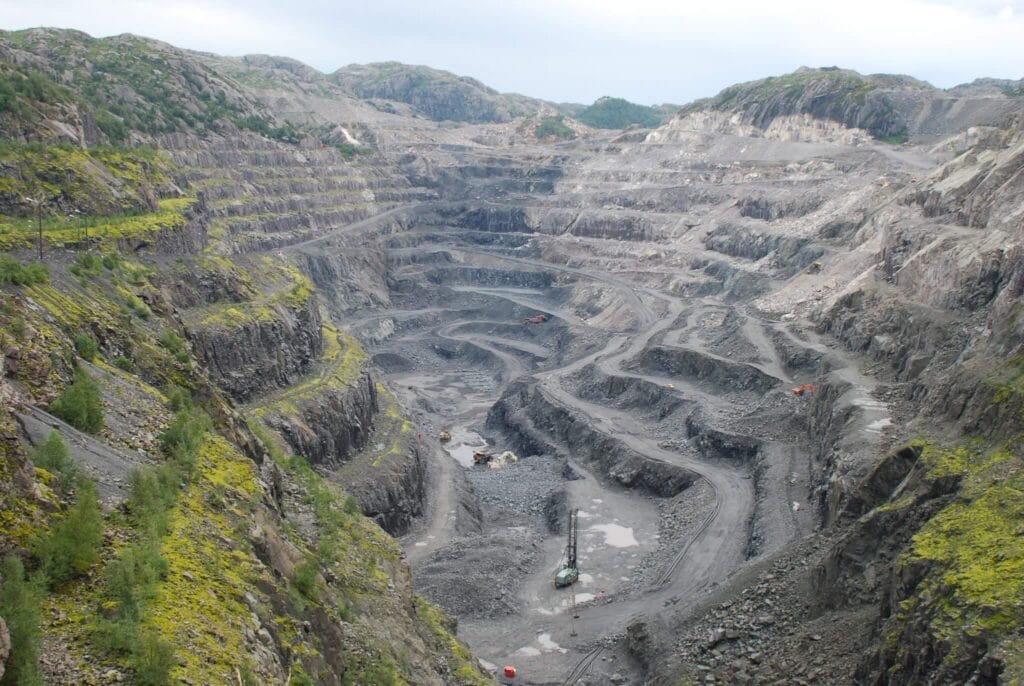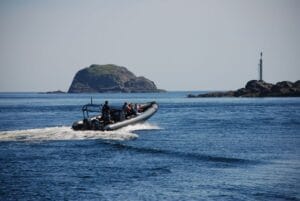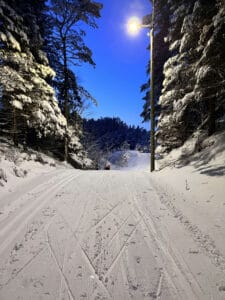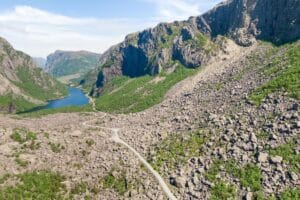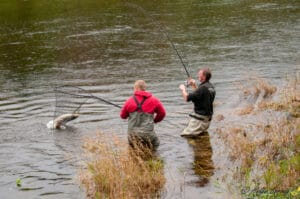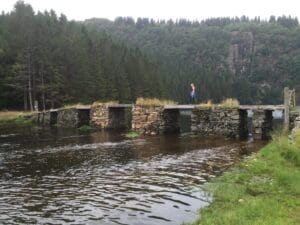
Tellnes mines
Day mining in Sokndal
Geology and nature
I Tellnes få man oppleve verdens største ilmenitt-noritt intrusjon, og da den er økonomisk drivverdig kalles den en malm. Malm-intrusjonen inneholder fortsatt, etter nesten 60 års drift, mer enn 300 millioner tonn malm og det foreligger planer for mer enn 60 års videre drift. Malmen heller svakt nedover mot øst. Bruddet er ca 2 km langt, 1 km bredt og 200 meter dypt. Nederste palle er ca på kote 40. Gjennom bruddet og malmen går det to basalt-ganger som er ca 300 millioner år yngre enn malmen (datert ca 618 mill. år), som krystalliserte for ca 920 millioner år siden. De tre mineralene ilmenitt, ortopyroksen og plagioklas utgjør det aller meste av ilmenitt noritt malmen med ca 1/3 hver. Det vil si at ved optimal produksjon vil man få ca. 1 million tonn ilmenitt produkt dersom man tipper i overkant av 3 millioner tonn malm i grovknuseren. Side-bergarten på begge sider av malmen er anortositt. Anortositten som i all hovedsak består av mineralet plagioklas, krystalliserte ca 10 millioner år før malmen intruderte den. Dette skjedde på ca. 20 kilometers dyp under avslutningen av den Svekonorvegiske orogenesen.
Culture and history
Titania's history goes all the way back to 1902 when the company was formed as a development company to look at the ore deposits in the area. Ore was taken from i.a. Blåfjell (locality 37) and Laksedal and sent for trial smelting at different locations. In 1916, construction of the plant began at Sandbekk and a couple of years later the first boat load of ilmenite left Jøssingfjord. Fully investigated ilmenite went in waves over the heath from Sandbekk to Jøssingfjord. By-products such as silicon and magnetite went by electric train to Rekefjord for shipment there. Production at Sandbekk lasted right up to 1965, and at most up to 450 men worked in the various production stages to process the ore in Sandbekk. Sandbekk was operated as a mine and there are several tens of kilometers of mine tunnels in the mountain below Sandbekk.
In 1960, Titania started up at Tellnes in an open quarry. Production picked up calmly and at most more than 13 million tonnes of stone have been moved a year at Tellnes, of which almost 3 million tonnes of ore. At most, up to 300 men have worked at Tellnes in a male-dominated working environment, but over the years more and more women have joined the workforce. The dimensions at Tellnes are impressive with the enormous quarry and the large machines. The dumpers can take up to 180 tonnes in a load and the loader can load up to 30 tonnes in a bucket.
A bit about sustainable mining
Throughout history, mining has been a source of conflict. On the one hand, we need minerals and stone in industry to produce products we depend on and to build roads and infrastructure, while on the other hand, mining has created major environmental problems in many places. Almost 40% of all commercial activities in the world depend on resources we get from the earth. Mining will never be completely sustainable, but using tailings and deposited masses for various purposes and with increased reuse, the company can, through positive development over a few years, become almost sustainable.
How to get there?
Parking: Only possible with access on a booked tour by bus with a qualified guide.
Tilgjengelighet: 1 time med bil eller buss fra Egersund og Flekkefjord. Lett tur hvor man kun beveger seg ut og inn av bussen.
Duration: The visit itself takes 1 - 1.5 hours by bus to the vantage point over the breach and down Hommedal (crushing building, flotation building and laboratory) and out to the departure.
Photo gallery
Her er Tellnes
Category:
Geopark, Magma Geopark Sites, Sokndal
Other experiences in Magma Geopark
See more experiences in Magma Geopark
